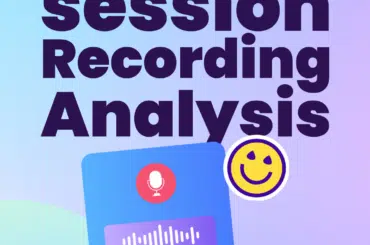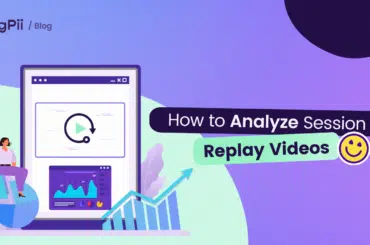When was the last time you tested your website?
I’m pretty sure you’re going to say I look at it about every day and it looks and works fine.
But, what if I told you, that’s actually not true.
What if your website might not be as easy to navigate as you might’ve considered?
Well, that’s exactly what we’re going to be talking about in this blog.
But first, let’s start with website usability tests, what are they?
What are website usability tests?
Website usability testing is an online research method used to collect data about how well users can accomplish their tasks on a website.
It measures the ease of use, efficiency, and satisfaction with which users perform specific tasks on that site.
Google defines “website usability” as your ability to find your way around the website and establish a successful interaction.
If after some time spent browsing. If you are not able to do this, then the website has low usability.
Usability tests are performed by observing test participants using the website interface or prototype for achieving pre-determined goals while recording elements such as screen recordings, eye tracking heatmaps, click maps, etc., so it is possible to assess user behavior based on quantitative and qualitative data.
The most common tasks are to register, log in or search for information.
Usability tests can be used to assess the ease of use of existing websites, but also as a method during the design process so that usability problems can be identified quickly and solutions can be developed before actual development begins.
A website with high usability scores is more likely to increase conversions (e.g., registering on your site).
Studies show that websites with good usability experience attract more returning visitors than those with poor experiences.
How do you know if your website has low usability?
Today, almost every business has a website, but not all of them have the same goals. There are three main goals for websites:
1) Inform
2) Acquire
3) Engage
Inform sites transfer information to their users. Examples would be educational institutions, e-commerce stores that sell products, or technical support sites that provide troubleshooting tips. Websites that are designed to communicate with their user base will benefit from high usability scores because there is no need for complicated navigation or design elements, as long as the content is easy to find and access.
Acquire sites aim to encourage consumers to complete an action on site.
Examples include e-commerce shops selling physical products, news portals where you will subscribe for a newsletter or even entertainment sites that want you to buy tickets. Websites that have high usability scores are more likely to be trusted by users and increase site traffic.
Engage sites aim to keep the user engaged with the brand.
Examples include social media websites where users come back daily to get updates from their friends or interact with them or entertainment websites where branding is an important element in encouraging loyalty and repeat visits.
These types of sites need to make it easy for users to navigate around and discover content while also providing a rewarding experience for them.
Therefore, I suggest performing a website usability test on your site before adding anything new.
How should you evaluate your website?
There are different techniques that can be used to test the usability of a website including:
– Online Platforms
– Interviews
– Think Aloud Protocols
– Diary Studies
– Card Sorting
However, about 90% of all usability tests are done by using the following three most common tools: 1) Heuristic Evaluation 2) Cognitive Walkthrough 3) System Usability Scale (SUS).
What are the best usability testing tools in 2022?
Here are our top picks for the best usability tools that you should consider in 2022
UserZoom
UserZoom offers remote moderated usability testing that helps businesses ensure that users are getting the best possible experience on their website.
All of this is done through UserZoom’s one-way video platform, which means that you can run your tests from any location in authorized geographic areas.
UserZoom allows you to:
– Test over mobile or desktop devices – Record user session videos – Collect both qualitative and quantitative feedback after each test question – Categorize results automatically for quick review
Although UserZoom does not offer anything unique when compared with other online usability tools, it still has everything that you need for running a successful web-based research study. The best part? It’s very affordable. This tool provides its services at a very affordable price.
They don’t disclose their pricing on their website.
UserTesting
UserTesting is an online user testing tool that provides instant feedback on any website, page, or feature.
All you have to do is set up your test and then ask the participant to navigate through your website while discussing their thoughts out loud for each page they are viewing. The entire process takes around 15 minutes per tester.
Here are some of UserTesting’s most important features:
– It saves money by allowing you to upload scripts beforehand so that testers only have to view them rather than read them out loud
– You can use video recordings or screen capture videos depending on what type of information best suits your needs
– Target specific countries for participants
They don’t disclose their pricing on their website.
UsabilityHub
UsabilityHub is a testing tool that allows you to test your website against common usability guidelines (i.e, Fitt’s Law).
All you have to do is recruit people for testing and then ask them to complete the tasks on your website or app.
Once they are finished, their feedback will be presented in the form of videos, screenshots, and playbacks of their screen as they work through each task.
You can also send these participants specific questions about any page that they viewed before asking them to go through any tasks.
This works both ways because it allows you to find out if users prefer certain features or elements within your website – all while watching how they use them in real life.
Features:
– Asks users to complete tasks on your website or app
– Gathers qualitative and quantitative data through videos, screenshots, and playbacks of their screen
– Allows you to ask specific questions about any page they viewed before the usability test took place
Pricing start at $79/m
Conclusion
Choosing the right tool is essential for running a successful test.
But a test without a plan is like a boat without a motor, it’ll go nowhere.
So make sure you do your research right, know what you’re testing for, and keep everything organized.
We’ve listed 3 of our favorite tools, if you have other favorite tools make sure you let us know.



